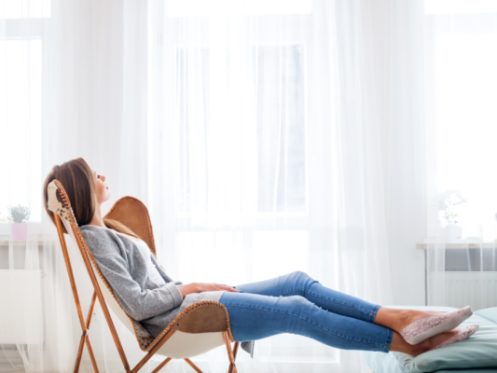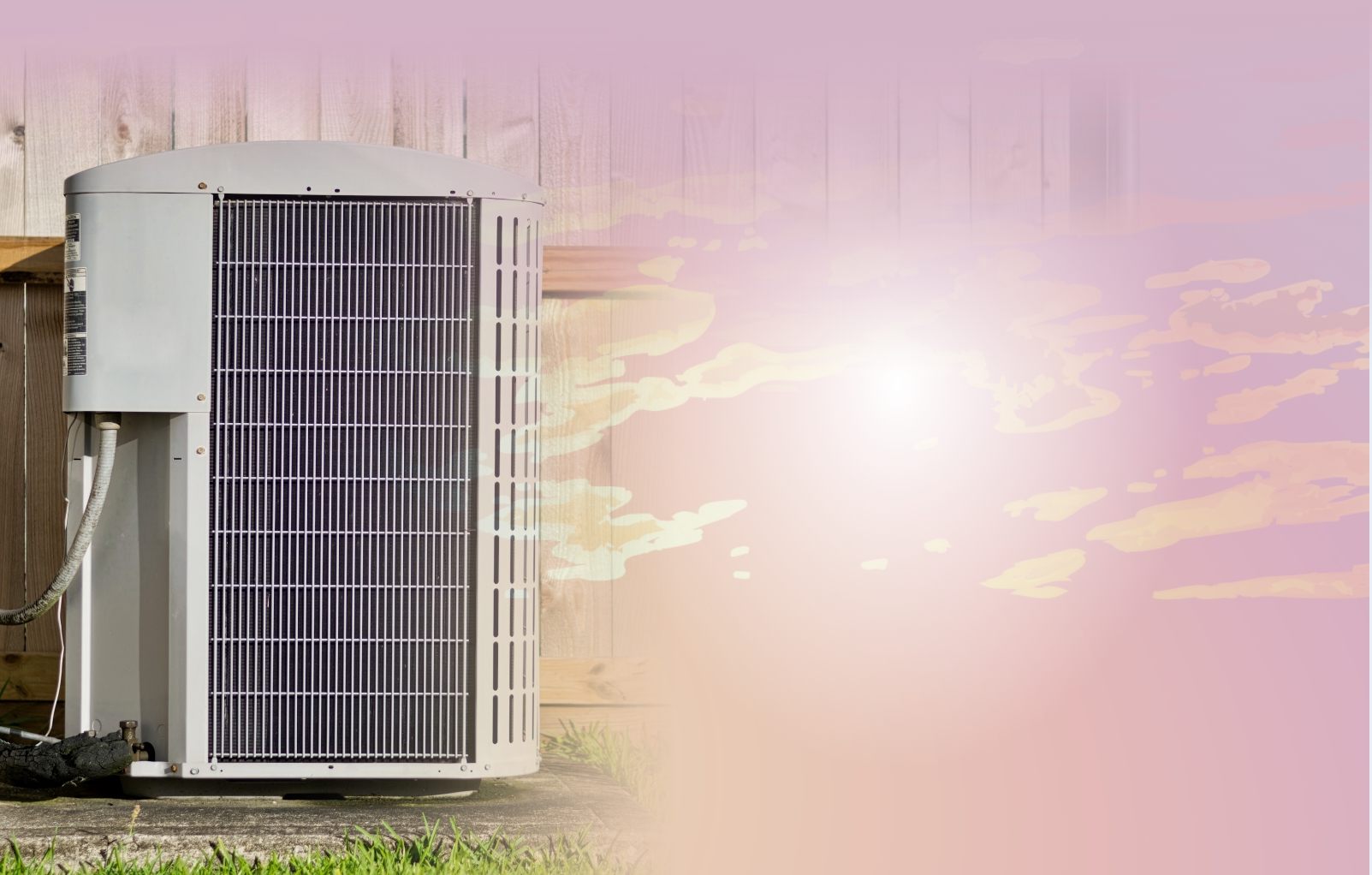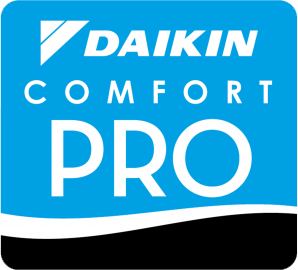The air is naturally more humid in summer because warmer air can hold more water vapor. That higher water content can affect your comfort and health. It can impact home maintenance too. The solution is a whole-house dehumidifier. These systems remove excess water from your air through a refrigeration cycle and allow you to set relative humidity precisely. While they initially cost more than portable dehumidifiers, they provide better long-term value. They’re also more effective and convenient. Let’s explore more than a dozen signs your home needs a dehumidification system.
1. High Relative Humidity
RH measures the percentage of water vapor in the air in the context of temperature. The U.S. Environmental Protection Agency warns against letting RH in your home get above 60%. This is the point at which you’re inviting a range of health and home maintenance issues. The easiest way to determine RH in a home is with an inexpensive digital hygrometer. If your RH is above 60%, it’s a clear sign you need a dehumidifier. You may want to target 50% or even 40%. Many people are most comfortable in summer at 50% or below. According to many sleep specialists, 40% to 45% is ideal along with a temperature of 65 to 68 degrees Fahrenheit.
2. Elevated Indoor Air Pollution
The EPA warns that indoor air pollution is a top environmental health concern for U.S. households. There are many factors. Indoor air is often more polluted than outdoor air due to higher concentration levels. Tight building envelopes and a lack of mechanical ventilation can exacerbate this issue. The air inside the home can’t become less polluted than the ambient air without some form of air purification. Another factor is humidity. Higher moisture content lends itself to higher pollution levels and greater air stagnation. If you’re considering upgrades like an air purifier and ultraviolet lamp, it’s a good idea to pair them with a dehumidifier.
3. Sticky Feeling Even With the AC On
Many U.S. households rely on air conditioning to keep them comfortable all summer long. While an AC performs some dehumidification as a byproduct of cooling a home, it isn’t a dehumidifier. On humid days, an AC can struggle to keep up. It’s not uncommon to feel a bit sticky even though the home is relatively cool. A dehumidifier will eliminate this discomfort. It will also improve AC efficiency and decrease wear and tear on the system.
4. Difficulty Breathing and Sleeping in Summer
Humid air is denser and heavier than drier air. That makes it hard for your lungs to extract oxygen from the atmosphere. This is why it often feels harder to breathe in hot, humid air. You may also experience decreased energy levels or even fatigue. Humidity affects sleep too. It slows the rate at which you cool down, which is necessary for sleep. Any breathing difficulties will continue. Those will disrupt entering deep sleep and shorten how long you remain in those deeper cycles.
5. Heightened Allergy and Asthma Symptoms
High RH in the home is bad for those with asthma and allergies because it’s more difficult to breathe. There’s often more ozone in the air, and people are more prone to respiratory irritation. High RH will trigger attacks more frequently and worsen symptoms. If someone in your home has allergies or asthma, many allergists recommend keeping RH at 50% or less.
6. Condensation
Condensation on windows happens because of a temperature difference between the indoor and outdoor air. It can be an indication of other problems, including poorly insulated windows. Still, it’s a sign that the moisture content inside your home is too high. You may also notice condensation on a water heater or boiler. That’s especially bad if it drips or pools. When water content is very high, you can even experience condensation on doors and walls.
7. Musty Odors
Musty odors in a home are usually an indication of mildew. Mildew is a surface fungus that thrives off the excess moisture in a home. You may notice a fleeting mustiness when the AC cycles on. That indicates mildew in the ducts or microbial growth on the evaporator coil. You may also notice persistent musty odors in bathrooms and elsewhere in your home. Mildew doesn’t penetrate the way mold does. If you keep RH at 50% or less, the mildew will go away on its own.
8. Mold
Mold is also a fungus, but it’s different than mildew. Mold spores can be present in a home and affect your health long before you smell or see the resultant mold. If a mold colony forms, it is more problematic than mildew and requires remediation. That’s because mold penetrates and becomes difficult to remove. Another reason homes should consider a dehumidifier is that it will all but eliminate the possibility of a mold problem.
9. A Damp Basement or Crawl Space
With crawl spaces and basements, it’s important to rule out fundamental issues. You may need a sump pump installed, your foundation sealed, or your crawl space encapsulated. If you still have a moisture problem, you might need a basement or crawl space dehumidifier. You could also need a dehumidifier for the living space.
10. Dust Mites
Dust mites are arthropods that you can’t see with the naked eye. They’re present in most homes and feed on dead skin cells. While the idea of them may be gross, they’re harmless to most people and pets. That said, at least 5% of the U.S. population has a dust mite allergy. Dust mites can even lead to asthma in people allergic to them. The good news is that dust mites can’t survive in low RH. You can all but eliminate them with an RH of 50% or less.
11. Water Stains
Water stains on ceilings, basement walls, and elsewhere indicate a moisture problem. The moisture dries and leaves behind minerals, which cause the staining. Sweating, such as around the base of toilets, can indicate a moisture problem as well.
12. Peeling Paint and Blistering Wallpaper
High humidity accelerates the breakdown of paint and wallpaper. With paint, this can lead to a dullness in color. Surfactant leaching can cause spots on the paint, and over time, the paint can begin to peel. Humidity breaks down the adhesive between your wallpaper and walls. It can cause wallpaper to blister and buckle.
13. Creaky Doors, Cabinets, and Floors
Do you notice that your doors and floors creak more in the summer? That’s an obvious indication there’s too much moisture in the home. It means that the wood is expanding due to all the moisture it has absorbed. This can shorten the life span of artwork, musical instruments, wood furniture, doors, and much more.
Install a Whole-Home Dehumidifier in the OKC Metro Area
Home Comfort Solutions is a locally owned and operated HVAC company serving Moore, OK and the surrounding areas. Our company offers both residential and commercial services, including new construction. Our NATE-certified technicians install, maintain, and repair air conditioners, ductless mini-splits, heat pumps, and furnaces. They also handle IAQ, including air purifiers, UV lamps, dehumidifiers, and humidifiers. We offer maintenance plans that keep your equipment on schedule while saving you money, and we’re available 24/7 for emergency repairs. To schedule service or a consultation, call us today, or book your appointment online.








